During and in the four days immediately following the US Sailboat show in Annapolis, Maryland, the Cruising World judges inspected and sailed on 27 boats vying for recognition. Learn more about the boats in our 2022 Boat of the Year »
It’s fitting that the category of uncompromising world cruisers comes from different corners of the world: the Far East, Sweden, France. On top of that, the three vessels vying for victory in this Full-Size category are testaments to the fact that there are many ways, in both systems and construction, to skin the proverbial cat. Electric propulsion (Salona 46); metal construction (Cigale 16); twin rudders, and advanced onboard power storage and distribution (Hylas H57). In different aspects, each of these nominees are state-of-the-art. They collectively prove that if you wish to sail far, you can go your own way.
French boatbuilder Alubat has a long and impressive history of building aluminum sailboats that have taken adventurous sailors far into the high latitudes. The yard’s range of Ovnis date back to 1974, and feature a centerboard design that allows them to cross oceans, then slip into thin waters where other cruisers might not venture. In 1994, the yard began to build keel yachts under the Cigale range. The company also offers the Ovnicat, a 48-foot aluminum multihull.
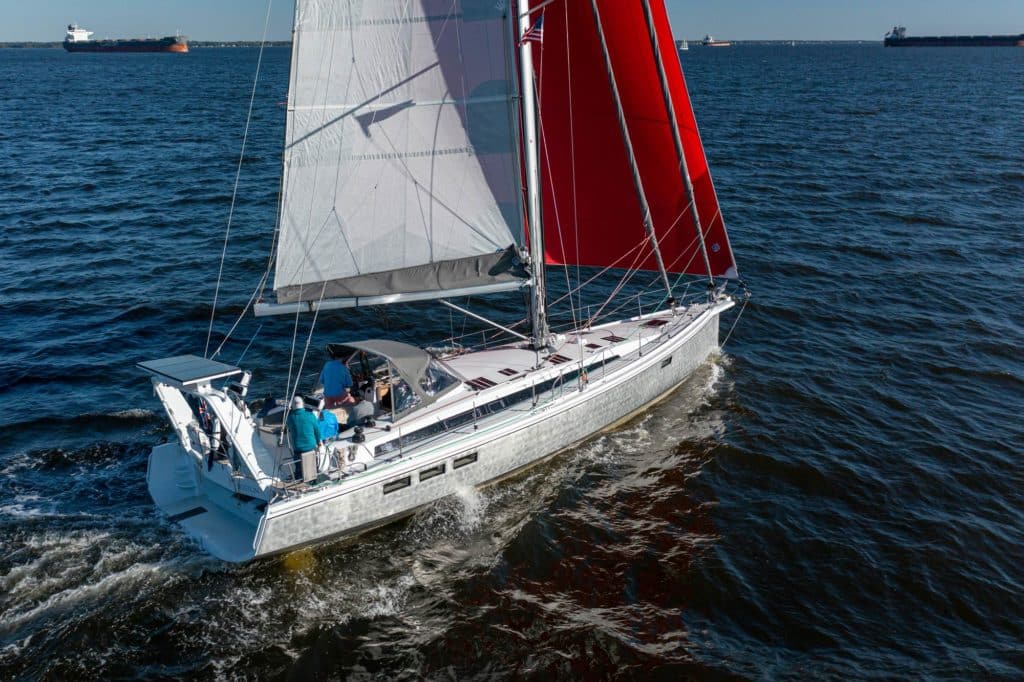
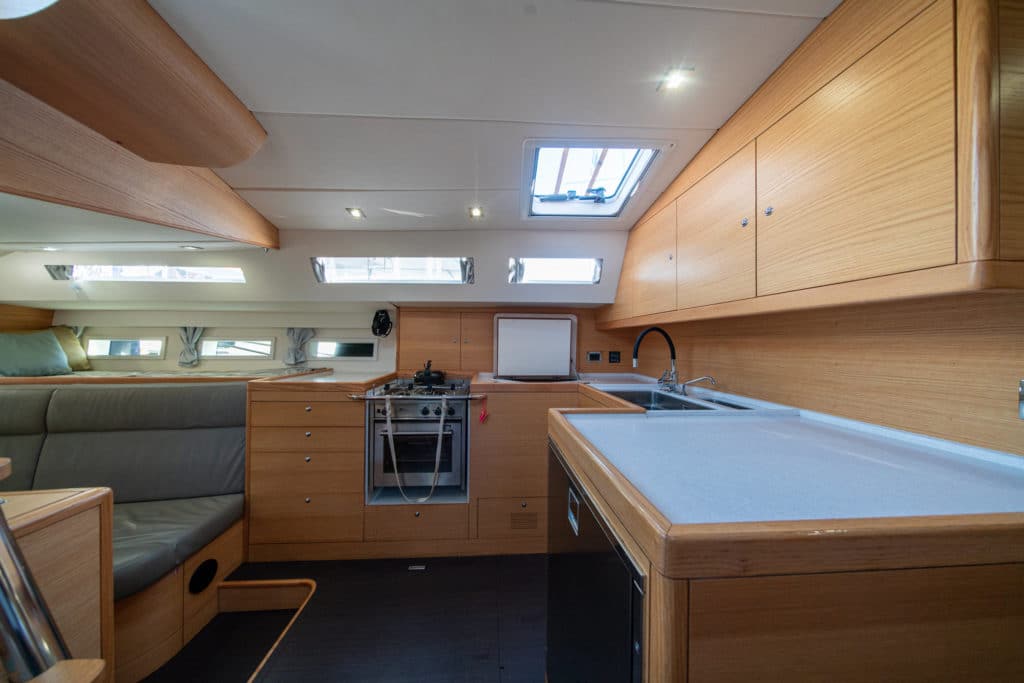
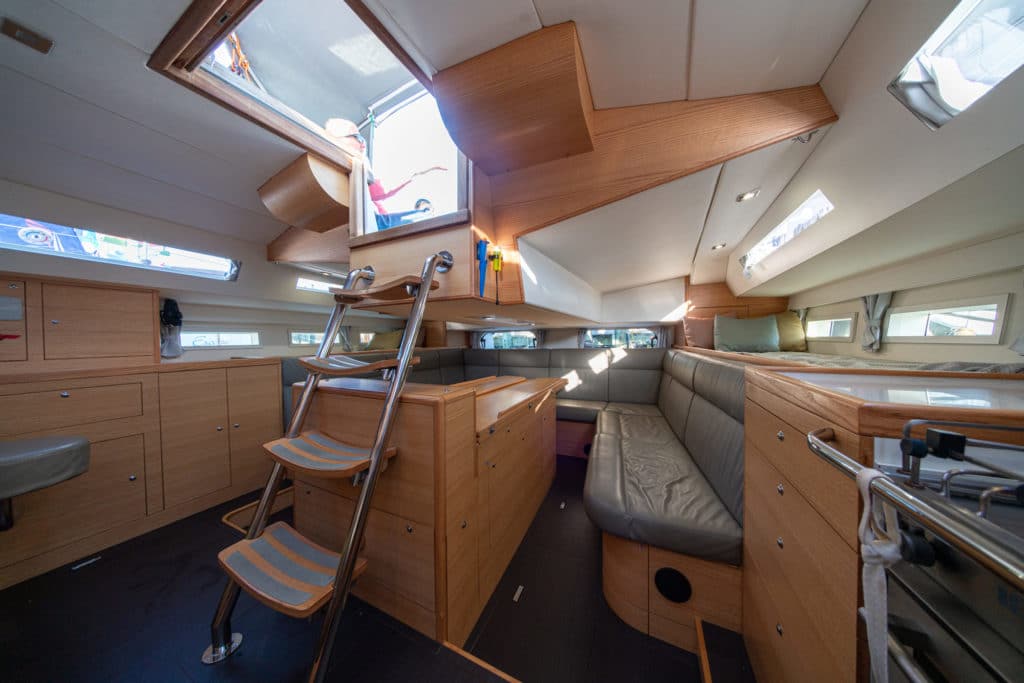
Evidence of how the company has evolved over time is exhibited by the Cigale 16, the boat our judges inspected and sailed during the 2022 Boat of the Year contest. “It’s a Marc Lombard design, so more performance-oriented than earlier boats,” judge Tim Murphy said. “There’s more luxury here; it’s a new direction.
“The Cigale’s layout down below is really intriguing, with the saloon and dinette situated below the cockpit, where there’s also a series of berths, including a couple of pilot berths. The very experienced owner said, on passage, that they never went forward at sea. It’s smart and well-proven.” Forward of the saloon, a passage leads to a double berth and cabin forward, with two additional cabins, one to either side.
The boat features a versatile cutter rig. Tacking upwind, the staysail is easy to manage. Crack off to a reach and roll out the genoa and you can shift gears a bit. Then further off the wind, hoist the colored sail set on a continuous-line furler and you have yet another option for how to get from here to there.
The judges had two reasons to look forward to a sea trial of the Salona 46, the latest model to be sent Stateside from the company’s yard in Slovenia. First, in fit, finish and gear the flagship of the range promised to be a fine sailing boat, created in collaboration with the team at J&J Design. Secondly, with its twin Oceanvolt ServoProp variable-pitch saildrive units, the 46, imported by San Francisco’s Green Yachts, is definitely one of the leading proponents for electric propulsion in the United States.
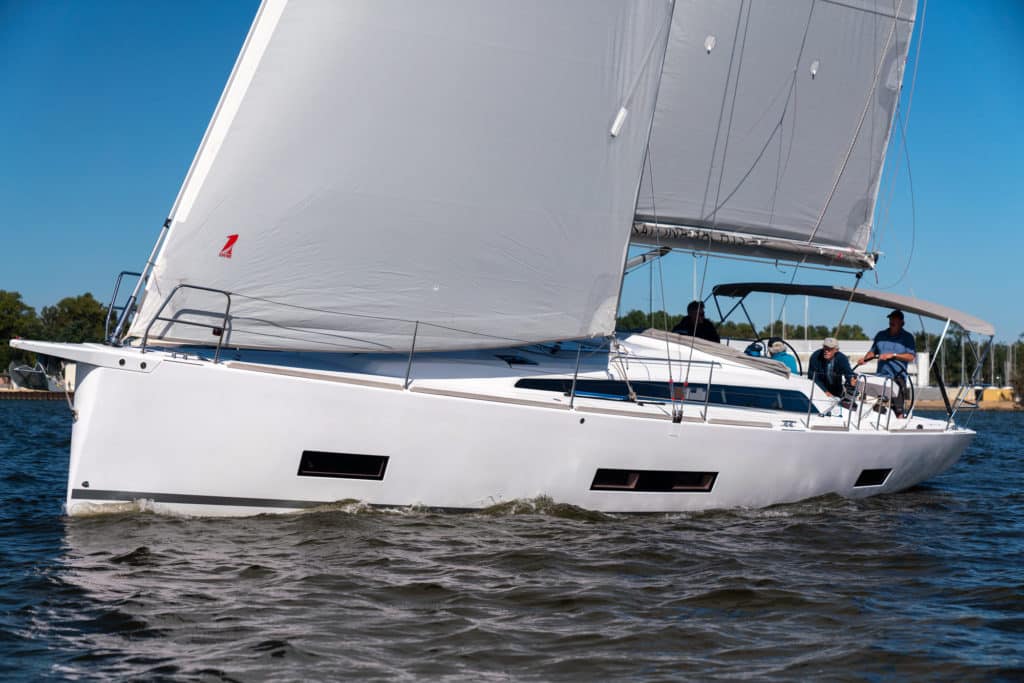
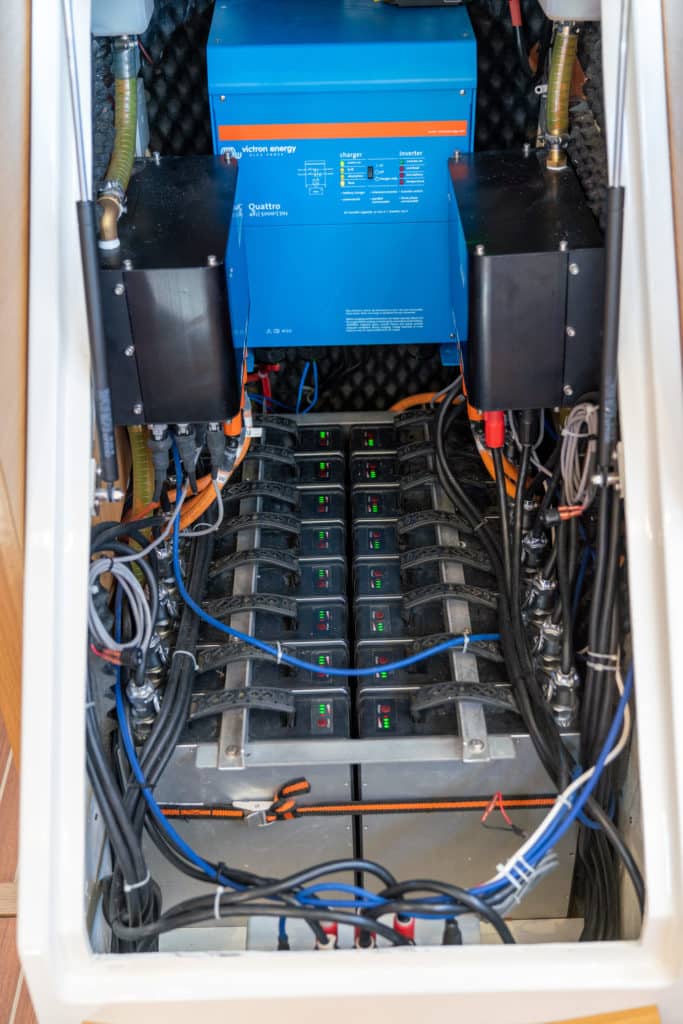
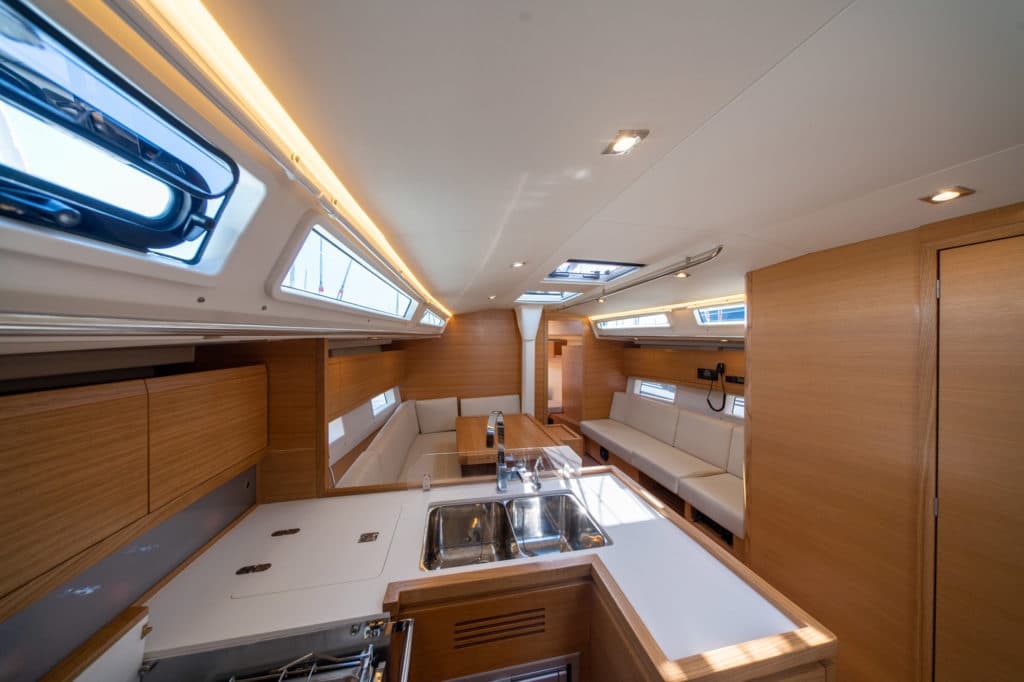
Judge Murphy noted, “There are a lot of things to say about the Salona that are very strong. They’ve got a galvanized grid structure, and that’s a fine way to build a sailboat. It ties all the loads from the rig and keel together and makes for a really stiff boat. And our sail trial was superb. This boat lit up under sail, and was a joy to steer and tweak.”
Indeed. In 8 to 10 knots of breeze, we sailed along closehauled in the 6-knot range and gained another half knot as we cracked off to a reach. The single rudder/twin wheel steering was light and smooth, and the boat responded immediately to any tug or ease on the traveler.
The all-electric propulsion system was equally intriguing. In place of an engine below the companionway steps, Salona installed a sizeable bank of lithium batteries, all controlled by a battery management system that monitors charging and battery health to avoid any potentially dangerous problems. The batteries in turn power two Oceanvolt sail drive units, mounted to the hull under each of the aft-cabin berths. Each drive is capable of regeneration while the boat is sailing, and the theory behind having two is that the batteries can be recharged twice as fast, at a cost of about half a knot of boat speed.
The importer said that in long-range power mode, the 46 should be able to travel approximately 70 miles at a speed of 3 to 3.5 knots. Want to get home quick? You could cruise at 6.6 knots for about 15 miles. In all likelihood an owner with cruising aspiration would install a diesel generator for auxiliary charging.
And added benefit of the twin drives is that you have twin propellers and greater maneuverability. The importer demonstrated in open water how this might be employed in tight quarters and it seemed to work well.
Even with two strong sailing boats in the hunt for top honors, the Hylas H57 still managed to kick things up a notch or two, both dockside and sailing. As the judges reviewed their notes and deliberated over the Full-Size Cruiser entries, there were many reasons that it rose to the top of this highly competitive category.
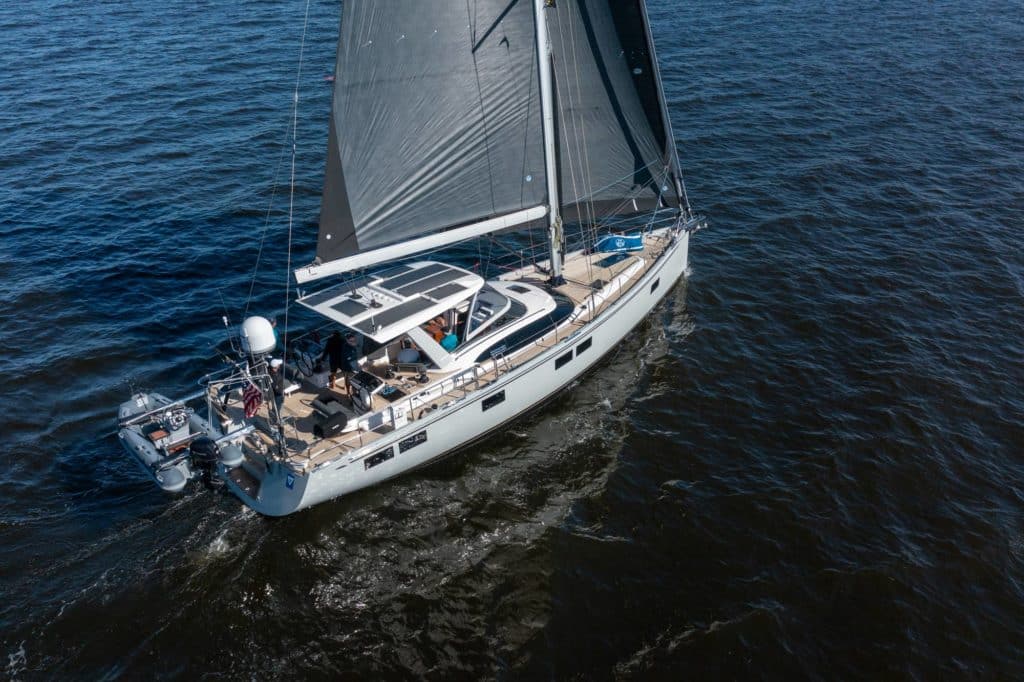
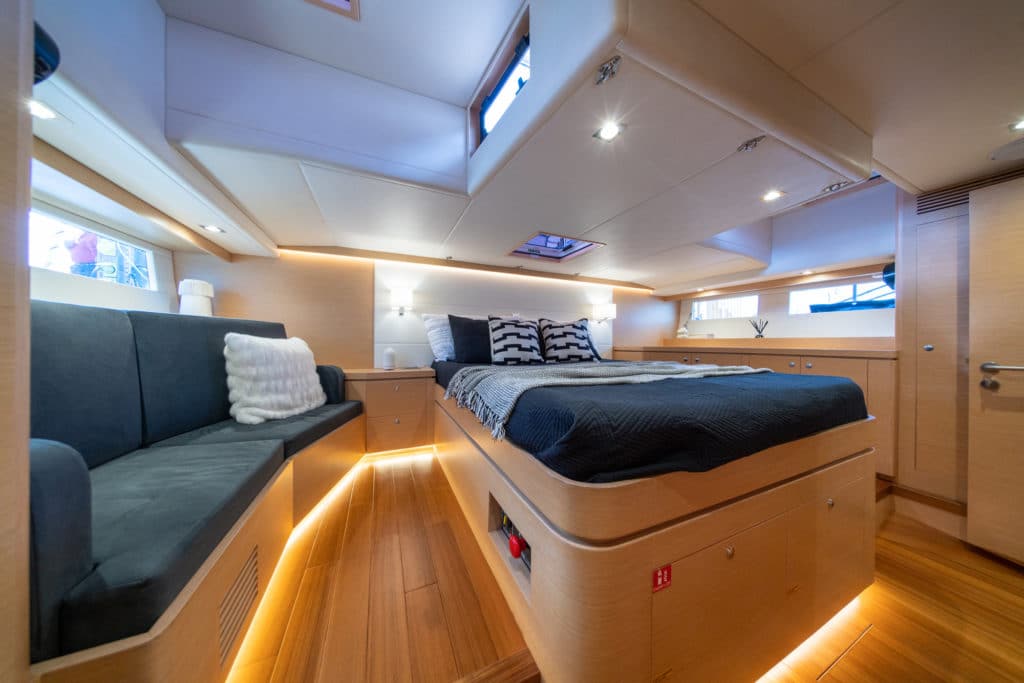
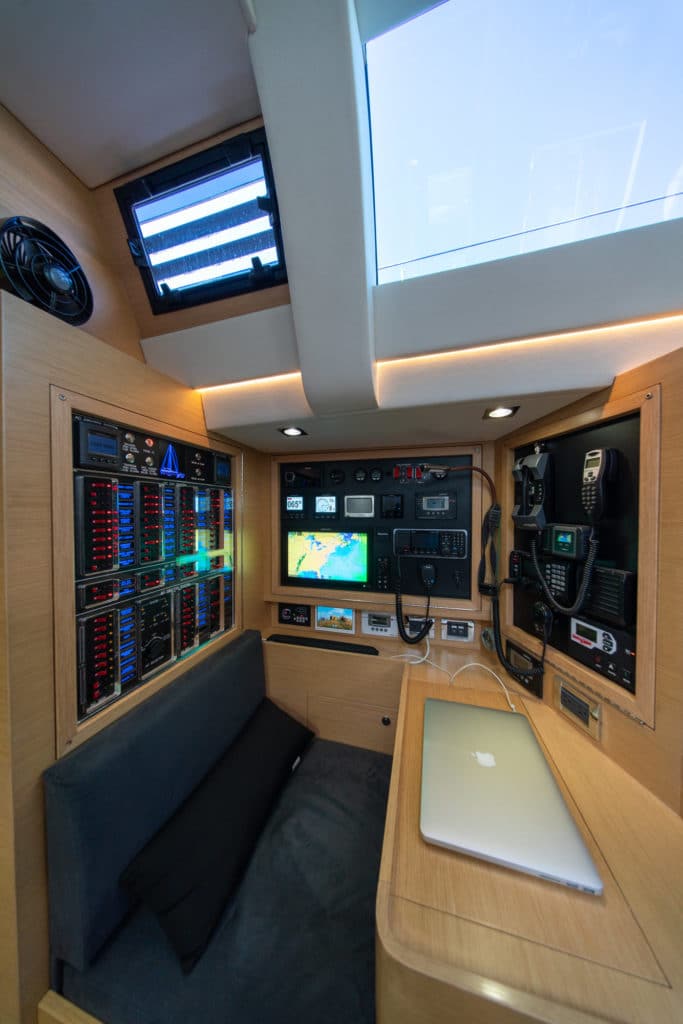
Judge Gerry Douglas summed things up well: “The Hylas 57 is clearly driven by experienced builders with a vision of what a modern cruising boat can be. This is a new design and a departure from the traditional Hylas look, but it retains the construction and build quality for which the company is renowned. From the Bill Dixon design, integrated sailhandling systems, deck styling and interior finishes, the H57 is a fresh approach that indicates nothing has been taken for granted, but analyzed by experienced sailors to facilitate safe passages and comfortable life aboard.”
Hylas Yachts has had a good track record with previous Boat of the Year judging teams, who in the past have often also cited the systems and workmanship that go into these long-range cruisers, all built in the Queen Long Marine shipyard in Taiwan. It’s a family-owned boatbuilder that’s just recently been handed over to the next generation, and the H57 in part marks the transition.
The boat is packed with systems designed to enable a cruising couple or short-handed crew to handle its power-packed and versatile cutter rig. Sails are set and furled mechanically, and a camera system can monitor their trim (as well as numerous other areas of the boat) and send the video feed to the multifunction displays at either helm and down below at the nav station. This, plus a cockpit that has a hard Bimini overhead and side panels that can enclose it, takes watch keeping in challenging weather to a whole new level.
Judge Ed Sherman noted the thought that went in to how various technologies were used to make handling the boat easier. “I thought they did a great job, actually, in designing the sailing and handling controls. It’s all right there near the helm. And it worked pretty well. I liked that.” And so did his colleagues, which is just one of several reasons they named the H57 Best Full-Size Cruiser.
See even more details on the H57 with our new StoryStream interactive experience by clicking here.








